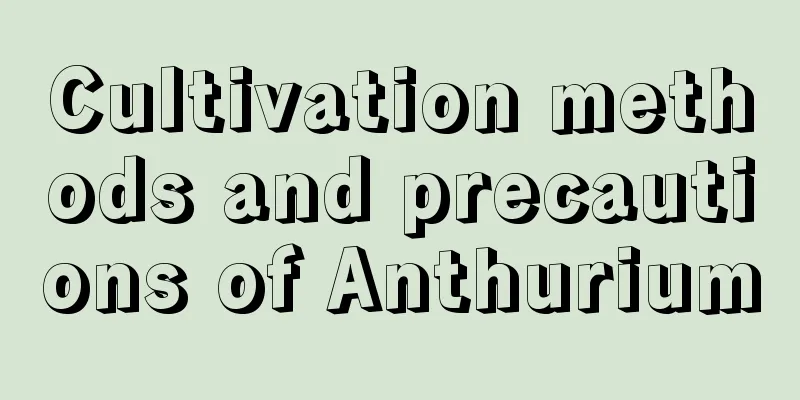How to grow mint? Mint planting method

1. Leveling the LandMint should generally be planted in places with sufficient sunlight and convenient irrigation and drainage. The soil should not be too acidic or too alkaline. A relatively flat terrain and fertile soil are more conducive to its growth. However, after planting it once, you cannot plant it again within three years. After finding the land, you need to deep plow it first, and apply well-rotted compost, superphosphate and bone meal as base fertilizer to the land, rake it finely and turn the fertilizer into the soil. 2. Seedling cultivation methodThere are three ways to raise seedlings. Root-rhizome seedling cultivation is generally carried out in April or August. Select healthy and pest-free plants as mother plants. In early winter, cut off the stems and leaves above the ground, and leave the rhizomes in the ground. For seedling division, the thinned seedlings need to be planted separately when they grow to 15 cm. In May and June, cut 10 cm long branches and insert them into the seedbed. They can be transplanted after they take root and sprout. 3. Daily ManagementDuring the growth of mint, the first thing to do is to check the condition of the seedlings and replant appropriately in places where seedlings are missing. After the weeds are fully filled, it is time to start weeding. Eliminating weeds can prevent them from competing for nutrients and promote the growth of seedlings. When it grows to 10-15 cm in height, you can add some urea, 10 kg per mu. In the early growth stage, water should be poured once every 15 days, and 4-5 more times are needed from emergence to harvest. 4. Disease prevention and controlDiseases that harm mint include black shank, rust and leaf spot. Among them, black shank disease mainly occurs in the seedling stage, which will cause the base of the stem to turn black and rot, causing it to fall over and wither. It is generally controlled with thiophanate-methyl or carbendazim. Rust disease often occurs from May to July and can be treated with fenadimefon. Leaf spot disease is more common from May to October, and can be controlled by spraying Zineb once a week. |
<<: Papaya planting technology, how to plant papaya seeds
>>: Money tree cultivation methods and precautions, money tree pictures
Recommend
The most frequent blooming bougainvillea star ranking: which bougainvillea varieties are frequent bloomers and beautiful
Bougainvillea is a flower that many people like. ...
When do figs ripen? Pictures of figs
1. When is it mature? It usually starts to mature...
When and how to plant milk cabbage
Planting time of milk cabbage If milk cabbage is ...
What to do if boxwood leaves turn yellow
1. The temperature is too low Reason: If we do no...
How to grow lace golden dew flowers
1. Lighting Lace golden dew flower likes light an...
How long is the growth cycle of chicory?
Introduction to Chicory Growth Chicory mostly gro...
The breeding method of Anping's ten great fruits
1. Soil It is a broad-leaved plant that likes moi...
What should I do if the teyu lotus grows too long?
The reason for the leggy growth of the jade lotus...
When is the best time to plant autumn cucumbers?
Cucumbers can usually be planted in spring, summe...
Planting technology and cultivation management of golden thread vine
As a precious medicinal material, the wild resour...
The principle of plant cultivation
1. Principle Stuffed cultivation is a short-term ...
Planting and introduction of juniper bonsai
1. Planting 1. Choose a pot: Before planting the ...
Where is cashew tree suitable for planting?
Cashew tree planting area Cashew trees generally ...
What are the cultivation methods and precautions of Gardenia jasminoides
Gardenia Introduction Gardenia, also known as gar...
Is the bird's nest suitable for indoor cultivation?
1. Is it suitable for indoor breeding? It is suit...









